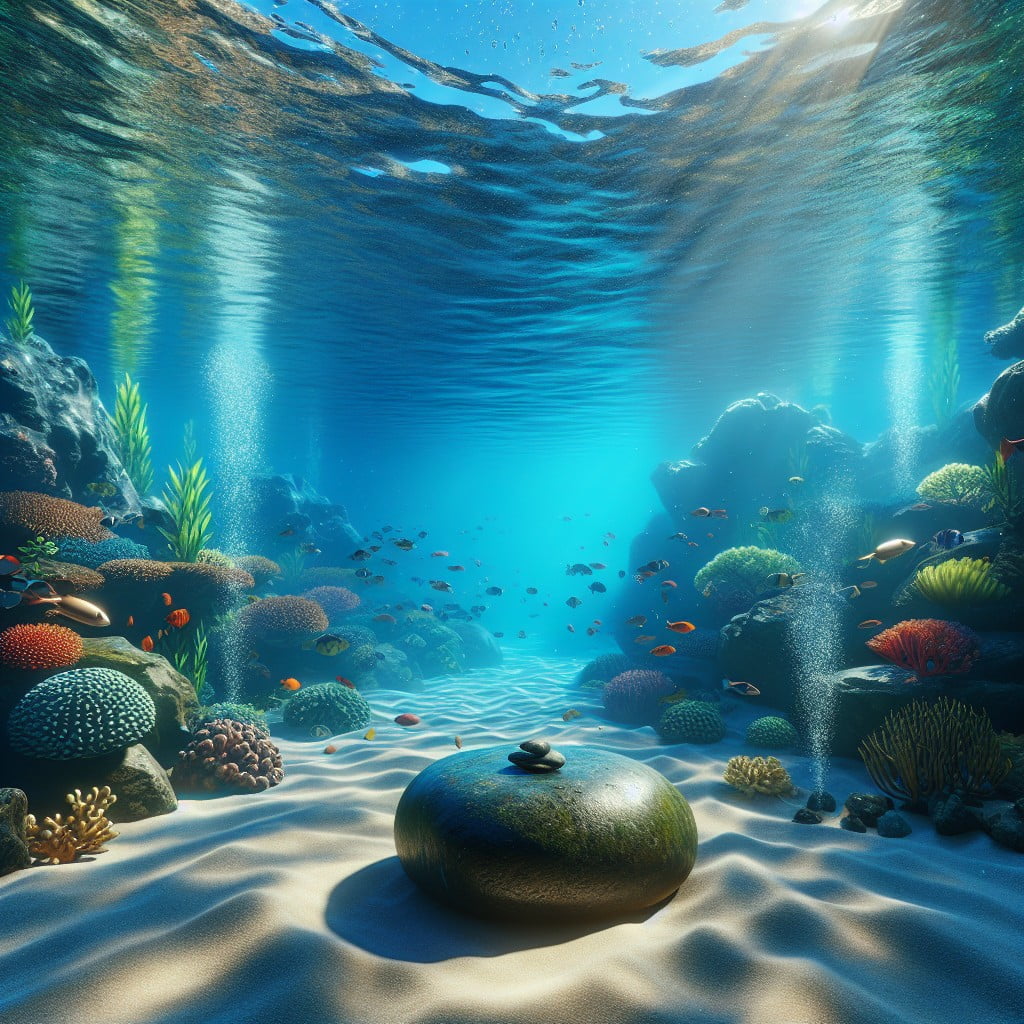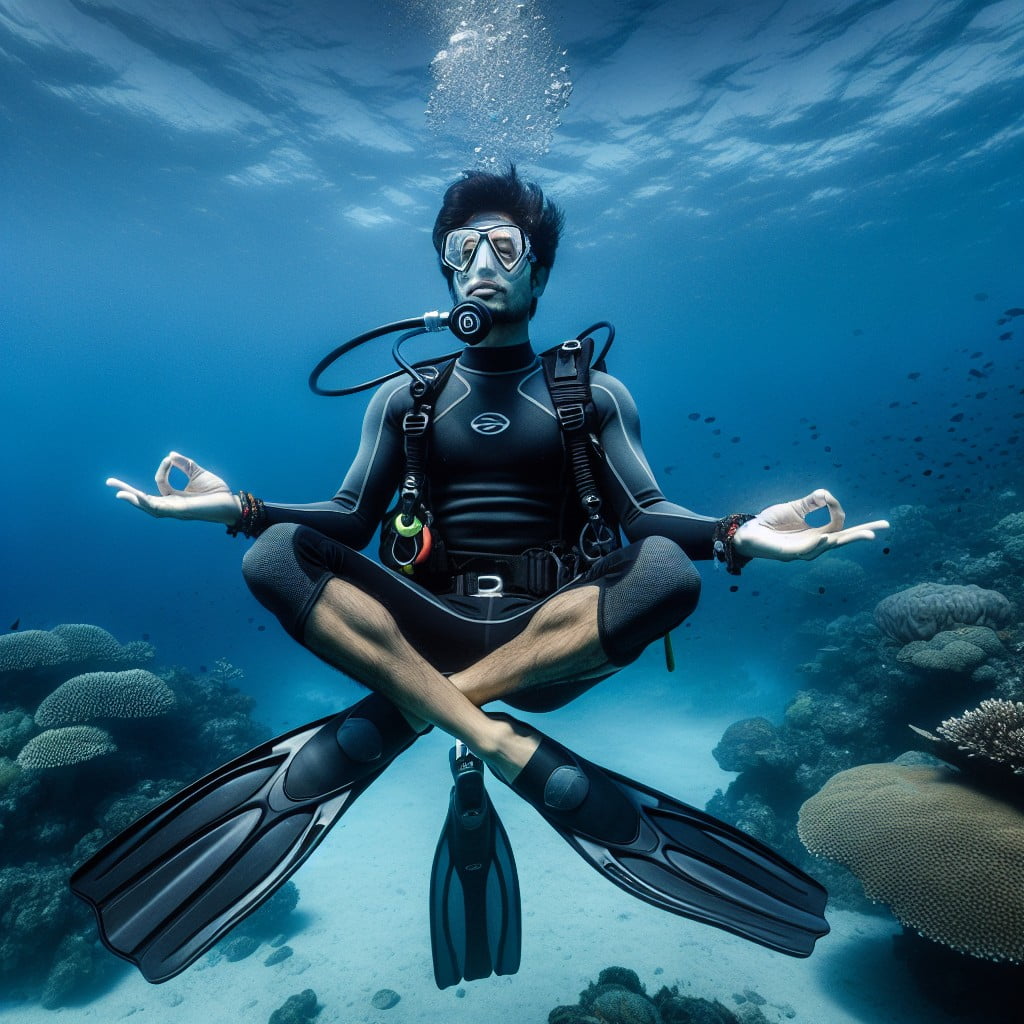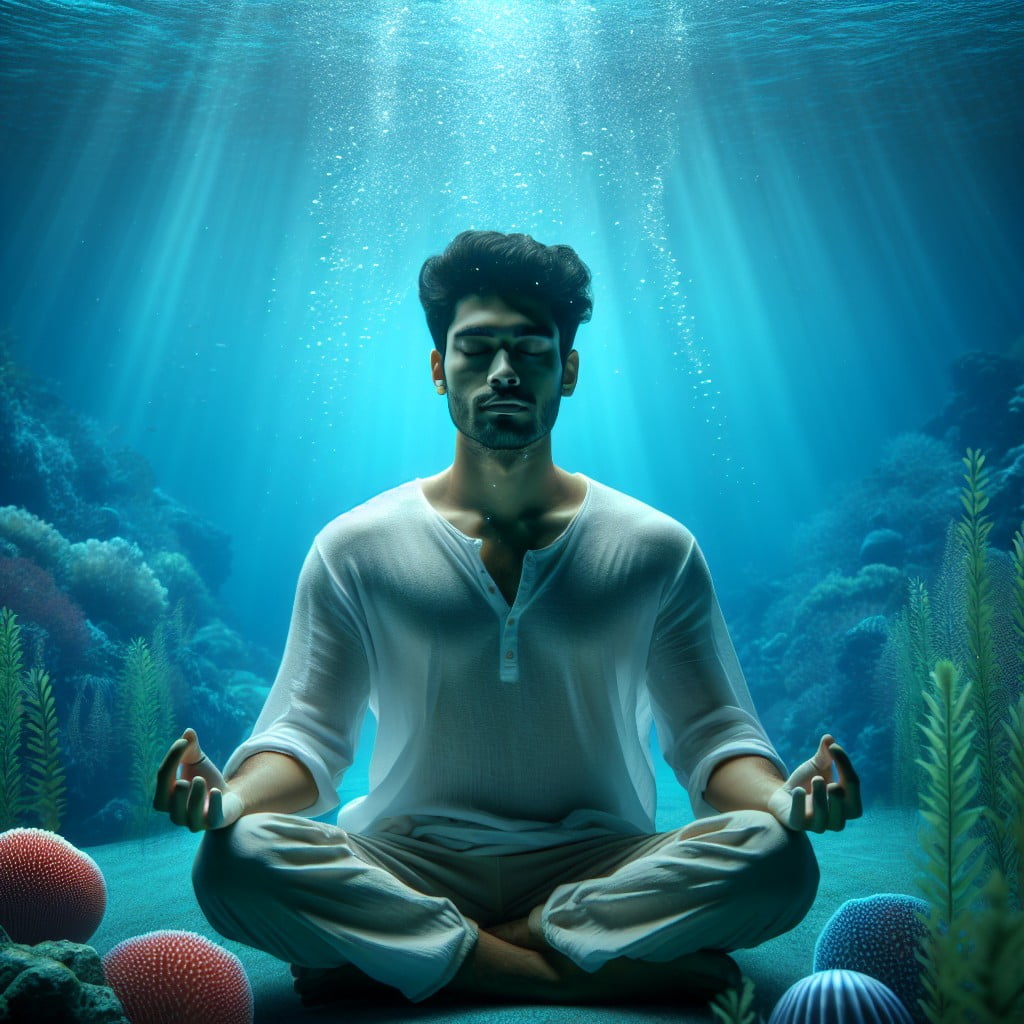Dive into the calming depths of underwater meditation because it opens up a unique sensory world that amplifies mindfulness and tranquility.
Diving into the depths of underwater meditation, it’s a unique and immersive experience that combines the tranquility of meditation with the serenity of being submerged in water. This practice is not only about achieving mindfulness and relaxation, but also about exploring a new sensory world beneath the surface.
In this article, you’ll discover a step-by-step guide on how to meditate underwater, from the preparation phase to the actual meditation process. Uncover the benefits of this practice, safety precautions, and tips to enhance your underwater meditation experience. Let’s plunge into this fascinating journey of underwater mindfulness.
Key takeaways:
- Choose a calm and accessible underwater location for meditation
- Master basic scuba diving skills for safety and comfort
- Focus on steady, conscious breathing underwater
- Embrace the soothing sounds and sights of the underwater environment
- Engage in mindful exploration of the underwater world to deepen meditation experience
Selecting a Quiet, Underwater Location for Meditation

Your environment significantly impacts your meditative state, shaping your concentration, relaxation, and journey towards mindfulness. When choosing an underwater location, consider the following pointers:
- Tranquility: Opt for a location with minimal noise and disturbance. Natural water bodies like tranquil lakes or calm bays offer an ideal environment.
- Visibility: Clear water allows you to easily absorb the calming visual elements around you.
- Accessibility: The site should be simple to enter and exit without exertion or danger.
- Depth: For safety, pick a spot that isn’t too deep. A depth between 10 to 30 feet is often sufficient.
- Marine life: While appreciating and incorporating marine life into your meditation can be enriching, select locations with non-threatening sea life.
Never compromise on any aspect that could affect your safety. Thoughtfully chosen settings set the stage for powerful, immersive underwater meditations.
Understanding the Basics of Scuba Diving

Before submerging into the serene underwater environment, it’s crucial to effectively learn some foundational scuba diving techniques. Keep these key points at your fingertips:
- Gear Familiarization: Learn each component’s name, function, and placement to ensure your safety and ease during underwater meditation.
- Pressure Equalization: Grasp the technique of equalizing pressure in ears because it can change rapidly as you dive deeper.
- Sign Language: Communication signs in scuba diving are paramount in maintaining safety and clarity underwater.
- Breath Control: Master the art of slow, deep, and continuous breathing to avoid hyperventilation.
- Emergency Protocols: Understand the necessary steps during unexpected situations like equipment failure, disorientation, or entanglement.
Remember, these important skills not only anchor your safety but enhance the mindfulness experience, allowing your focus to shift from the mechanics of diving to the peaceful undersea world.
Focusing On Breathing for Underwater Meditation

Given the unique environmental conditions underwater, attention to breath regulation becomes doubly important. The rhythm and pace of your respire directly affect your overall physical and mental stability. Below are a few guidelines to help with this:
1. Steady Inhalation and Exhalation: Assure a regulated breath cycle. Deep, steady inhales paired with calm exhales create a rhythm that fosters natural synchronization with the aquatic surroundings.
2. Conscious Breathing: Be mindful of each breath, recognising its life-giving importance and the harmony it brings with the immersion in water.
3. Listening to Breathing Sounds: The sound of your breathing through the scuba device can provide a rhythmic mantra, aiding in achieving a higher level of focus and calmness.
4. Use Breathing as an Anchor: Whenever distracted by the underwater environment, bring your focus back to the act of breathing – it serves as an excellent meditative anchor.
5. Mindful Oxygen Use: Although enriched air tanks provide ample supply, a conscious approach to oxygen consumption adds another layer to your underwater meditation experience, encouraging efficient energy use and mindfulness.
By focusing on these guidelines, you can significantly enhance your underwater meditation experience through mindful breathing.
Embracing Underwater Sounds to Enhance Mindfulness

Delving into the depths of an aquatic environment immerses you in unique sonic textures. The pitter-patter of water against the surface, the faint hum of marine life, and the soothing rhythm of your own bubbles rising upwards form a symphony of sounds to fully engage your mindfulness. These aquatic melodies can become focal points of your practice when acknowledged with curiosity rather than distraction, enhancing the depth of your mental presence.
Here are some points to consider.
- Tune into the rhythm of your bubbles: Listen to the rhythm of your own exhalation bubbles. They provide a metronome, which can deepen your mindfulness.
- Attend to sounds of marine life: These sounds not only make you aware of your surroundings but also help achieve a sense of unity with the underwater world.
- Use the ‘sound of silence’: Moments of quiet between the aquatic sounds can be equally significant. Let these pauses afford you the space for thoughtful introspection.
Remember, mindfulness is all about awareness. Seeing every sound as an auditory witness to your underwater journey allows you to weave a richer tapestry of meditative experience.
Integrating Relaxing Underwater Views Into Meditation
Diving into the tranquillity of underwater views can significantly amplify the quality of your meditation. Here are key points to remember:
1. Open your eyes: Unlike traditional meditation, keeping your eyes open underwater can cultivate mindfulness and relaxation. Witnessing the serene life below the surface can be a therapeutic visual journey.
2. Utilise the color blue: The color psychology indicates blue as a color of peace and calmness. Absorbing this hue during your underwater meditation session can potentially promote relaxation.
3. Observed marine life: The unhurried movement of aquatic animals, their serene existence, and interaction with their environment can instil serenity in the practitioner.
Through the integration of these captivating sights underwater, your meditation journey can transcend to new levels, effectively promoting inner peace and mindfulness.
Enriching Meditation Experience Through Underwater Exploration
Communing with the undersea world is an effective mindfulness practice. As you swim amongst the vibrant marine life, pay attention to the rhythm of their movements. Notice the colors of the corals and the texture of the ocean floor. Allow your curiosity to guide you, but avoid rushing from one point of interest to another. The aim is to be fully present in the moment, observing without judgment.
Doing so not only enhances your exploration but also elevates your meditation experience. The underwater world offers unique stimuli that invoke a sense of awe and wonder, helping extinguish distractive thoughts. This practice can enrich the overall quality of your meditation, making it a deeper, more fulfilling experience.
Remember, safety is paramount. Always stay within your diving expertise level and awareness while exploring. Stay within well-known areas and abide by all safety regulations. This will ensure your underwater exploration remains a peaceful and enlightening experience.
Detailing the Benefits of Underwater Meditation
Experiencing meditation underwater offers unique advantages over traditional meditation methods. Firstly, the immersive nature of the underwater environment helps to enhance focus and minimize distractions. Coupled with the rhythmic patterns of breath common in both scuba diving and meditation, tranquility is achieved quickly and effectively.
Sounds below the surface, often described as melodic and calming, can replicate the effect of soothing meditation music aiding in achieving a deeper sense of calm. This auditory isolation serves as a form of sensory deprivation, which can trigger a more profound meditative state.
The visual aspect of underwater meditation also promotes a greater connection with nature, providing a stunning and shifting scenery to focus on. Observing the graceful movements of marine life has a calming effect, promoting mindfulness and aiding in stress reduction.
Physical benefits also accrue from underwater meditation. Water’s natural buoyancy can relieve pressure on joints and muscles, promoting relaxation and potentially reducing physical pain.
Last but not least, the underwater world’s sheer novelty can invigorate one’s meditation practice, leading to enhanced engagement and potentially more dedicated mindfulness over time. It’s an extraordinary environment, offering opportunities to cultivate focus, enhance sensory awareness, and deepen mindfulness practice.
FAQ
How do I start underwater meditation?
To start underwater meditation, you need to immerse yourself up to your chin into the water, start floating on your belly, use a snorkel for breathing, concentrate on the ocean sounds around you, and let the waves' rhythm control your breathing pace.
Is it good to meditate in water?
Yes, meditating in water is beneficial, especially for those who find traditional meditation challenging, as it offers a unique, safe way to experience full body benefits and foster a stronger connection to the present moment.
How do you meditate in the sea?
To meditate in the sea, breathe synchronously with the waves and adopt a mindset akin to the tranquil waters sinking into the sand, focusing on relaxation for optimal calmness of mind and body.
Why do people meditate in water?
People meditate in water as it amplifies the power of their meditation, calms their minds and fosters a sense of nonattachment and weightlessness.
What precautions should one take while practicing underwater meditation?
Ensure safety while practicing underwater meditation by always having a trained supervisor or partner present, not exceeding your breath-holding capacity, maintaining a relaxed state, and avoiding deep waters or hazardous environments.
Can underwater meditation improve your swimming skills?
While underwater meditation does not directly improve swimming skills, it can enhance mental clarity, focus, and relaxation, which can indirectly contribute to better performance in swimming.
What are the specific benefits of sea or ocean meditation as opposed to regular meditation?
Sea or ocean meditation, with its natural sounds and rhythmic patterns, provides a unique sensory experience that can enhance relaxation, deepen mindfulness, and foster a stronger connection with nature.